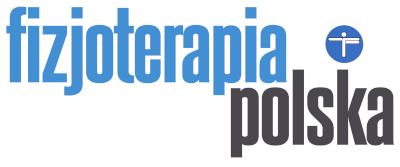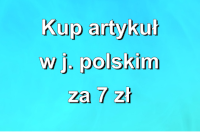Obecne podejście do postępowania posturalnego u pacjentów z mózgowym porażeniem dziecięcym
Agata Michalska, Zbigniew Śliwiński, Justyna Pogorzelska, Marek Grabski
Agata Michalska, Zbigniew Śliwiński, Justyna Pogorzelska, Marek Grabski – A Current Approach to Postural Care for Patients with Cerebral Palsy. Fizjoterapia Polska 2018; 18(3); 102-112
Streszczenie
Rehabilitacja stanowi zasadniczy element postępowania leczniczego w mózgowym porażeniu dziecięcym (MPD). Jednym z jej celów jest przeciwdziałanie wtórnym deformacjom mięśniowo-szkieletowym. Stosowanie różnorodnych technik w celu minimalizacji nieprawidłowości postawy oraz ułatwienia funkcji określane jest mianem postępowania posturalnego. Obejmuje ono odpowiednie pozycjonowanie pacjentów w pozycji leżącej, siedzącej i stojącej połączone z fizjoterapią.
Cel. Celem pracy jest przedstawienie aktualnego podejścia do postępowania posturalnego w oparciu o przegląd piśmiennictwa.
Wnioski. Jak dotąd nie opracowano ogólnie przyjętych zaleceń dotyczących wsparcia pozycji leżącej, siedzącej i stojącej w ramach programu posturalnego. Większość badań w tym obszarze to badania przeprowadzane na nielicznych grupach, z krótkim czasem obserwacji. Stąd trudna jest ocena skuteczności programu posturalnego, choć wyniki niektórych badań wskazują go, jako obiecującą metodę przeciwdziałania neurogennemu zwichnięciu stawu biodrowego. Uznaje się, że odpowiednie wsparcie pozycji ułatwia podjęcie aktywności i wspiera uczestnictwo osób z MPD, zwiększa poczucie kompetencji i motywuje do działania. Ze względu na zmiany konstrukcyjne sprzętu i wprowadzanie na rynek nowych rozwiązań istnieje pilna potrzeba prowadzenia dalszych badań w tym obszarze.
Słowa kluczowe:
postępowanie posturalne, mózgowe porażenie dziecięce
| Pobierz/Download/下載/Cкачиваете | Pobierz artykuł w j. angielskim/Available only English version/下載英文版 |


